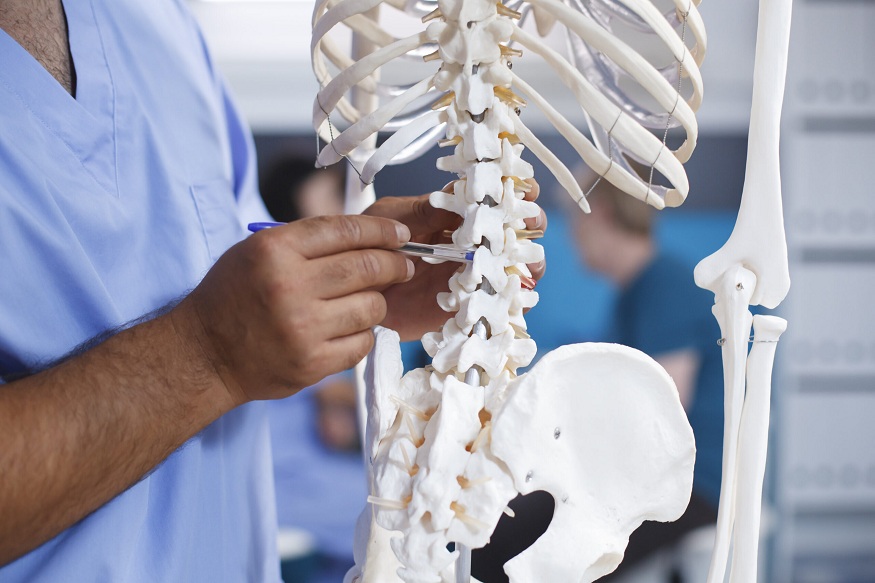Dr. Larry Davidson Explores Spinal Compression Fractures: Treatment Options That Work
Spinal compression fractures can have a major impact on a person’s daily life, often resulting in pain, reduced mobility, and a loss of independence. These fractures, mostly caused by osteoporosis, trauma, or degenerative changes, occur when a vertebra collapses, usually in the thoracic or lumbar spine. Dr. Larry Davidson, an experienced specialist in spinal care, recognizes that selecting the right treatment depends on a combination of factors, including the severity of the fracture, the patient’s overall health, and the presence of underlying conditions.
Fortunately, a range of effective treatments is available, from conservative management to minimally invasive surgical procedures. With the right care plan, many patients can reduce pain, regain function, and return to their normal routines. Understanding the various options helps individuals make informed decisions in partnership with their healthcare team.
Understanding Spinal Compression Fractures
A spinal compression fracture typically occurs when the vertebral body weakens and collapses under pressure. It can be due to conditions like osteoporosis, which reduces bone density, or high-impact trauma such as a fall or accident. These fractures often result in acute back pain, limited range of motion, and in some cases, spinal deformity such as kyphosis.
In some individuals, compression fractures may be discovered incidentally on imaging, especially if symptoms are mild. For others, the pain is immediate and significant, interfering with walking, standing, or daily activities. Prompt diagnosis through X-rays, MRI, or CT scans is essential for determining the extent of the injury and planning treatment.
When Surgery Isn’t Needed
For many patients, especially those with mild or stable fractures, non-surgical treatment may be appropriate. Conservative management usually includes a combination of:
- Pain medication: Over-the-counter analgesics or prescribed drugs to manage discomfort.
- Bracing: A back brace can help immobilize the spine, allowing the fracture to heal while limiting movement that could worsen the injury.
- Activity modification: Avoiding lifting, bending, or prolonged standing to reduce strain on the spine.
- Physical therapy: Once the acute pain has subsided, targeted exercises can help improve strength and posture.
This approach may be sufficient for patients whose fractures are not causing neurological symptoms or instability. Healing can take several weeks to months, and there is always a risk that the fracture could worsen or lead to additional vertebral collapse without more direct intervention.
Minimally Invasive Procedures
When conservative treatments are not effective or when the fracture causes significant pain and loss of function, minimally invasive surgical options may be considered. Two of the most widely used techniques are vertebroplasty and kyphoplasty.
- Vertebroplasty involves injecting bone cement into the fractured vertebra to stabilize it and relieve pain.
- Kyphoplasty follows a similar method but includes inserting and inflating a balloon to create a cavity and restore some vertebral height before the cement is placed.
Both procedures are typically performed on an outpatient basis and require only small incisions. Patients often experience pain relief within 24 to 48 hours and can return to light activity shortly thereafter.
These procedures are particularly beneficial for individuals who have not responded to rest or bracing and who need a faster return to function. They are also considered in cases where the fracture is progressing or affecting spinal alignment.
Advanced Techniques Improve Safety
In recent years, improvements in bone cement formulations, imaging, and surgical tools have enhanced the safety of vertebroplasty and kyphoplasty. High-viscosity cement reduces the risk of leakage, and real-time fluoroscopic imaging allows surgeons to guide needle placement and monitor cement flow with precision.Navigation systems and 3D imaging are also becoming more common. These tools help surgeons visualize the fracture in greater detail and plan a more accurate approach. They are especially useful in complex cases or patients with compromised bone structure.
Dr. Larry Davidson explains, “The rise of 3D printing in spinal surgery isn’t about discarding the tried-and-true methods that have served patients for decades. It’s about expanding the surgeon’s toolkit and offering new, highly personalized options for patients whose spinal needs go beyond what traditional implants can provide.”Modern spinal care is about precision and personalization, especially when dealing with fragile vertebral structures.
When Fusion or More Extensive Surgery Is Required
In rare cases, a compression fracture may be severe enough to cause instability, nerve compression, or deformity that cannot be corrected with cement augmentation. In these instances, spinal fusion may be recommended. This procedure involves permanently joining two or more vertebrae to eliminate motion in the affected segment.
Fusion is typically reserved for complex cases involving multiple fractures, significant spinal misalignment, or underlying structural conditions such as scoliosis. The recovery is longer than with minimally invasive methods, but it can provide long-term stability and pain relief when other treatments are not sufficient.
The Role of Bone Health in Prevention and Recovery
Regardless of the treatment option chosen, managing bone health is critical to preventing future fractures. Many patients with spinal compression fractures have underlying osteoporosis or other conditions that weaken bones.
After a fracture has been treated, patients should work with their physicians to assess bone density, review medications, and implement strategies to strengthen bones. These may include:
- Calcium and vitamin D supplementation
- Prescription medications like bisphosphonates
- Weight-bearing exercise
- Fall prevention measures at home
Physical therapy can also support recovery by improving posture, core strength, and flexibility. Long-term outcomes are often better when patients take an active role in maintaining their spinal health.
Choosing the Right Treatment Approach
Each case of spinal compression fracture is different. The ideal treatment depends on the patient’s age, overall health, bone density, pain level, and goals for recovery. For some, conservative management is enough. For others, a procedure like kyphoplasty can offer immediate relief and help restore quality of life.
The decision-making process should involve a thorough discussion with a spine specialist, including a review of imaging results and a conversation about risks, benefits, and expectations. Open communication ensures that treatment plans are aligned with the patient’s needs and long-term health goals.
Relief Is Within Reach
Spinal compression fractures can be painful and debilitating, but they are also highly treatable. Some options work, whether through non-surgical care or minimally invasive procedures. The key is early diagnosis, expert evaluation, and a tailored treatment plan that addresses not only the fracture but also the patient’s overall well-being.
With modern surgical techniques, improved imaging, and a better understanding of bone health, patients have more tools than ever to manage spinal fractures and avoid future injuries. By staying informed and working closely with experienced providers, individuals can take meaningful steps toward pain relief, mobility, and a stronger spine.

